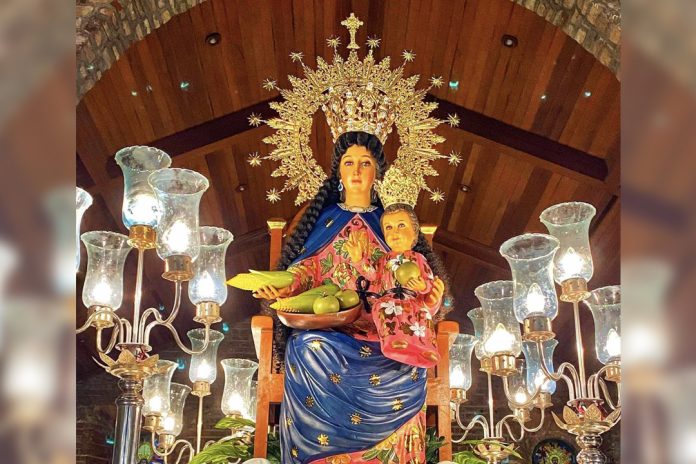The northern Philippine diocese of Bayombong recently introduced a Marian devotion under the title of Our Lady of the Good Harvest.
Bishop Jose Elmer Mangalinao led the launching with a Mass held at St. Dominic Cathedral on May 25.
During the liturgy, the new image of Our Lady of the Good Harvest was enthroned at the cathedral sanctuary.
An official citation of the diocesan Marian devotion was also read by Fr. Roberto Oliveros Jr, the diocesan chancellor.
In his homily, Mangalinao said, “Today is a very special day, because we celebrate our ‘Ina’, our Mother in this Marian month of May”.
“Now, here in our provinces of Nueva Vizcaya and Quirino, we solemnly embrace Mary as Our Lady of the Good Harvest and we celebrate her maternal presence, thanking God for giving her to us,” he said.
The image of Our Lady of the Good Harvest is the third version of the seated image of the Madonna and Child.
The first was an image of Our Lady of the Most Holy Rosary brought to Bayombong by the Dominicans that founded the parish in 1739. The image, however, was reportedly lost due to a fire that damaged the church and the convent.
The second image was brought by the missionaries of the Congregation of the Immaculate Heart of Mary (CICM), depicting a seated Madonna and Child bearing an apple and grapes depicting Mary as the New Eve and one with Christ the true vine.
Made by local artist Ian Vicente, the visage of the present image was based from the old statues. Instead of the apple and the grapes held by the second statue, the image held a perante orange and corn, both symbols of the abundance of the two agricultural industries in the provinces of Nueva Vizcaya and Quirino.
The title “Our Lady of the Good Harvest” was also introduced with the Ilocano rendition “Ina ti Nawadwad nga apit” due to the devotion’s connection to the people.









